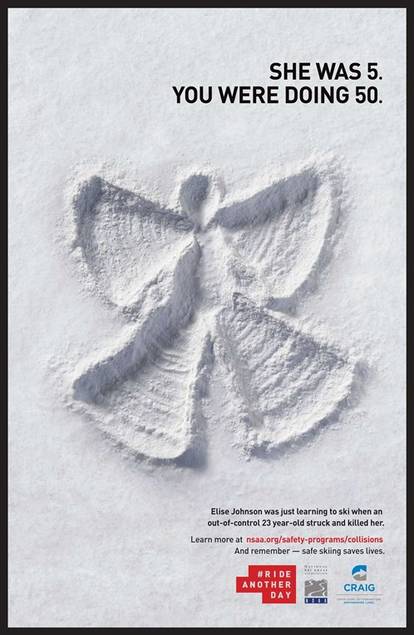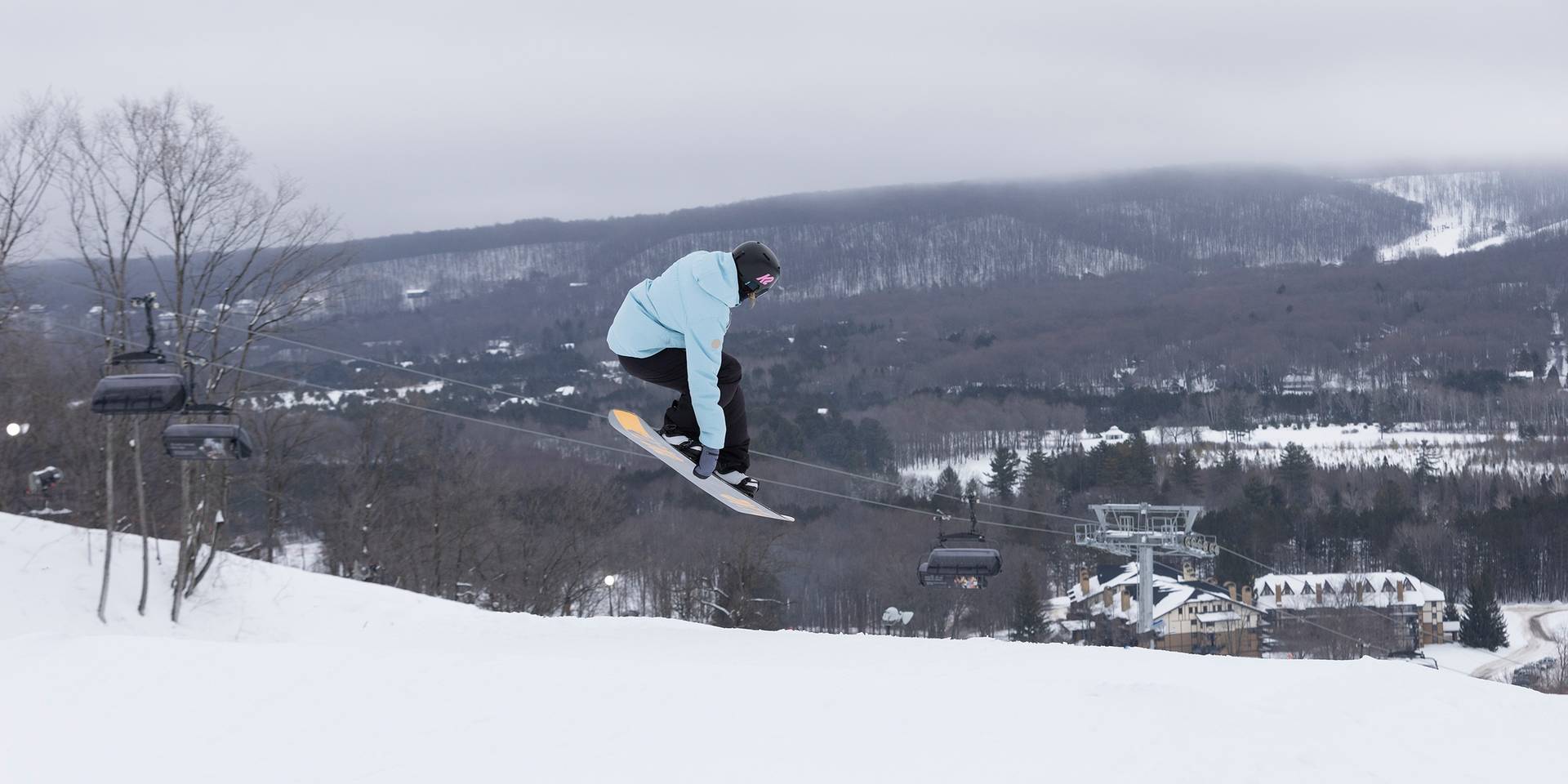Winter Safety
KNOW THE CODE | IT'S YOUR RESPONSIBILITY
Common sense is one of the most important things to remember and practice on the slopes. The National Ski Areas Association (NSAA) believes education, helmet use, respect, and common sense are vital when cruising the mountain. NSAA developed the Your Responsibility Code to help skiers and boarders be aware that there are elements of risk in snowsports that common sense and personal awareness can help reduce.
Winter sports involve a risk of serious injury or death. Your knowledge, decisions, and actions contribute to your own safety and that of others. Please ask any ski area employee if you need help understanding the Code.
HELMET SAFETY
Helmets can help mitigate head injuries on the slopes. Bonus: they also keep your head warm! While The Highlands does not require helmets, it is definitely a good idea to outfit your child with one and wear one yourself. While wearing a helmet is a personal choice, you will set a good example for the young ones in your family if you choose to wear one while skiing or riding.
- A peer-reviewed scientific study found that potentially serious head injuries in skiing decreased as helmet usage increased. Helmets have been found to reduce the severity of head injuries and almost completely prevent lacerations.
- Lids on Kids is a website dedicated to getting kids to wear helmets and emphasizing the importance of helmets in mountain safety. Check out the Helmets are Cool Video Series from our friends at the High Fives Foundation. See how wearing a helmet changed the lives of skiers and snowboarders, and get help finding the right one for you.
UPHILL TRAVEL
All Uphill Travel Is At Your Own Risk.
The Highlands Resort allows uphill access via skinning. Skinning is permitted during the winter season one hour before operating hours.
For the safety of everyone on the mountain, anyone participating in these activities must adhere to the following guidelines:
- You must have a valid season pass or day ticket.
- Uphill travel equipment is required to have metal edges, a restraining device or brakes and an industry-approved binding. (Cross country skis are not allowed.)
- There are three travel routes to choose from.
- North Camelot to Upper Camelot to Summit.
- Valley View to South Fork to Sound of Skiing To Upper Camelot to Summit.
- North Peak Pass to North Peak Warming Hut.
- If you skin up and descend prior to operating hours, you must travel down along the same route you traveled up. All trails and terrain parks are closed outside of operating hours, with the exception of the designated uphill routes one hour prior to opening.
- You must be visible to all traffic and follow the “Your Responsibility Code” at all times
- Overnight stays on the mountain are not permitted.
- Area Management reserves the right to close the mountain at any time.
- At the end of each operating day, the mountain is closed and all guests and staff are cleared.
Hazards: Participants must be aware of and avoid mountain hazards. Individuals are prohibited from within 25 feet of snowmaking equipment (i.e. snow guns, hydrants and electrical boxes).
Bright Clothing, Reflective Materials & Headlamps: It is strongly recommended that all uphill users wear brightly colored clothing and have reflective material on clothing, poles or packs to heighten visibility. Flashing lights, such as those commonly used by bicycle riders, make it easy for other users and ski area personnel to see you. Use extra caution if descending in the dark or low-light conditions.
Uphill Travel Routes: Be aware of other skiers, riders, and vehicles approaching you. Stay to the side of the authorized uphill routes and avoid spots where you may not be visible. When descending, please be aware and considerate of other users and ski area personnel.
Winch Cat Operations: Avoid all grooming operations, especially winch cats. The cable between the anchor and the cat can be difficult to see and may be under the snow. These cables can stretch for thousands of feet and can move very quickly.
Rescue Response: Outside of operating hours, patrol services are unavailable, and ski area buildings are closed. In case of an emergency, call 911 and know that response times could be extended. Mobile phone service can be unreliable on the mountain.
CHAIRLIFT SAFETY
Follow Proper loading and unloading procedures:
LOOK: Look behind for chair coming into the load area.
LOAD: Remove ski pole straps from wrist and hold them in one hand, freeing the other, and sit on the chair.
LOWER: Lower the bar promptly. The bar should remain down until indicated at the top of the lift.
LIFT: Raise the bar once indicated to do so by the signs at the top of the lift.
STAND: Once at the unload ramp, stand and unload safely.
LEAVE: Clear the ramp area quickly to alleviate congestion around the unload ramp.
Kids on Lifts
Using and riding chair lifts responsibly is one of the primary safety considerations for all skiers and boarders. A skier's behavior has as much or more to do with the sport's safety as any equipment from helmet to chair lift. In 2012, the Kids on Lifts initiative debuted nationwide to resorts and consumers. This site contains FAQs and safety tips on how to load, ride and unload responsibly, general skiing and riding tips, coloring pages for kids, public service announcements, and more. The tagline "No Horsing Around" is a motto we hope to ingrain in not only children but every skier and boarder.
Child Carriers on Chairlifts and Slopes >>
As a resort policy, The Highlands does not allow skiers or snowboarders to carry an infant or toddler in backpacks, chest packs, baby Bjorn, or other similar devices on their bodies while they are sliding down the hill or riding up the chairlift.
TIPS FOR AVOIDING COLLISION
Complementing the Responsibility Code and it's seven tenets, #RideAnotherDay promotes three actions every skier and rider can take to help keep themselves and those around safer on the slopes.
- Be Ready to slow down or avoid objects or other people at any time. Ski and ride in such a way that you are always able to control yourself regardless of conditions and avoid others and objects you may encounter on the run, groomed or otherwise.
- Stay Alert to what is happening around you, especially other skiers and riders. Being aware of those around you and changing conditions will help you have a fun and safe day on the hill.
- Plan Ahead by easing up at blind spots, check uphill when merging onto trails, and give other skiers plenty of room when passing. Look out for spots on the run where traffic merges or you can't see what's coming next. If you are unfamiliar with a run, take it easy the first time down it and make a note of places where you'll want to slow down, such as cat tracks and rollers. Also, give other skiers and riders lots of room, especially if you pass them. There's plenty of space out there, so there's no need to crowd each other.
Doing these three things every run will help keep the slopes safe and enjoyable for you and everyone else.

TERRAIN PARK SAFETY
This terrain park safety initiative began in 2001 with the help of the National Ski Areas Association (NSAA), Burton Snowboards, and many other contributing sponsors. Park Smart's goal is to educate riders about freestyle terrain safety. The orange oval is the symbol used to designate freestyle terrain and is usually posted at the top of the terrain park or pipe.
The PARK SMART Safety Program has 5 Main Messages:
- START SMALL: Work your way up. Build your skills.
- MAKE A PLAN: Every feature. Every time.
- ALWAYS LOOK: Before you drop.
- RESPECT: The features and other users.
- TAKE IT EASY: Know your limits. Land on your feet.
PEEPS - Park Etiquette and Education Program
SLEDDING
Sledding and tubing are prohibited on resort property at any time, day or night, outside designated areas.
- Resort terrain is unsuitable for sledding, tubing, or anything of the like and may increase the risk of losing control and colliding with objects (natural or man-made). Doing so may lead to severe injury or death.
- The resort is maintained 24 hours a day. Snowmaking, grooming, and chairlift maintenance occur during and outside operational hours. During these operations, unauthorized persons on the premises expose themselves to extreme hazards. In addition to the dangers posed by the highly pressurized snowmaking equipment, our snowcats, and snowmobiles continually traverse the slopes during grooming activities.
- Sledding is currently available to lodging guests through our Nordic Center.
- Sledding is currently available to lodging guests through our Nordic Center.
Explore the Trails
With 55 downhill runs, 3 exceptional terrain parks, and more than 16km of cross-country ski trails, it might take a few winter visits to see it all.
In the summer, The Highlands Mountain Bike Park offers 19 lift-served biking trails with ample features to conquer. Or, take it slow and absorb the scenery on more remote cross-country bike routes.

